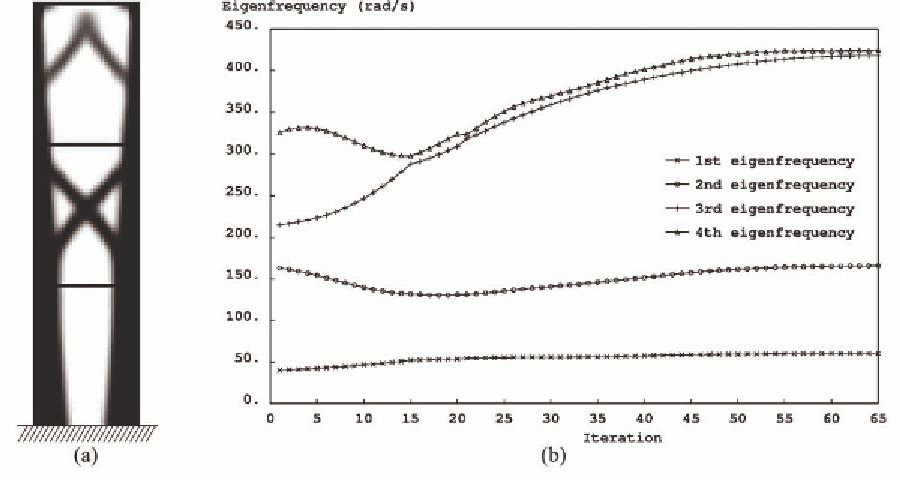Geology Reference
In-Depth Information
The first four natural frequencies of the initial
structure are
ω
1
= 40.2,
ω
2
= 163,
ω
3
= 215, and
ω
4
= 326 (rad/s). We now assume an excitation
frequency of 175 rad/s which falls between the
second and the third natural frequencies, and try
to move the natural frequencies of the structure
away from this frequency. The problem can be
simplified to maximizing the gap between the
second and the third natural frequencies, i.e.,
maximizing the following objective function
this multiple eigenfrequency has been handled
well by the algorithm.
7. FORCED VIBRATION
In previous sections we have focused on free
vibration and did not include external forces in
our formulations. This section deals with topol-
ogy optimization in forced vibration where the
external dynamic forces are explicitly considered
in the problem formulation. Similar to previous
sections we ignore damping effects, uncertainties
of the forces, geometry, and materials and consider
linear elastic material behavior.
Applications of topology optimization in
forced vibration have been initially studied by
Ma et al. (1993) and Ma et al. (1995) using a ho-
mogenization approach. Ma et al. (1995) briefly
discussed the forced vibration problem under pe-
riodic loads and defined the dynamic compliance
f
=
ω
2
−
ω
2
(1.60)
3
2
The solution procedure explained in section
5.3 has been adopted. The optimal topology and
the evolution history of the first four natural fre-
quencies are depicted in Figure 9. The optimiza-
tion algorithm, tries to increase the third natural
frequency while decreasing the second natural
frequency. After nearly 15 iterations, the third
eigenfrequency coalesced with the fourth one but
Figure 9. Maximizing the gap between the third and the second eigenfrequencies of the frame of example
3: final solution (a) and evolution of the first four eigenfrequencies (b). The first four eigenfrequencies
of the optimal structure are ω
1
= 74.6, ω
2
= 190, ω
3
= 397, and ω
4
= 408 (rad/s).

Search WWH ::

Custom Search